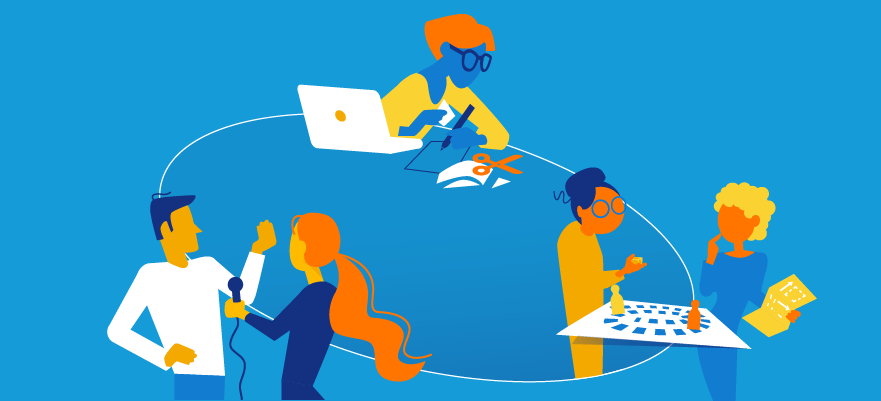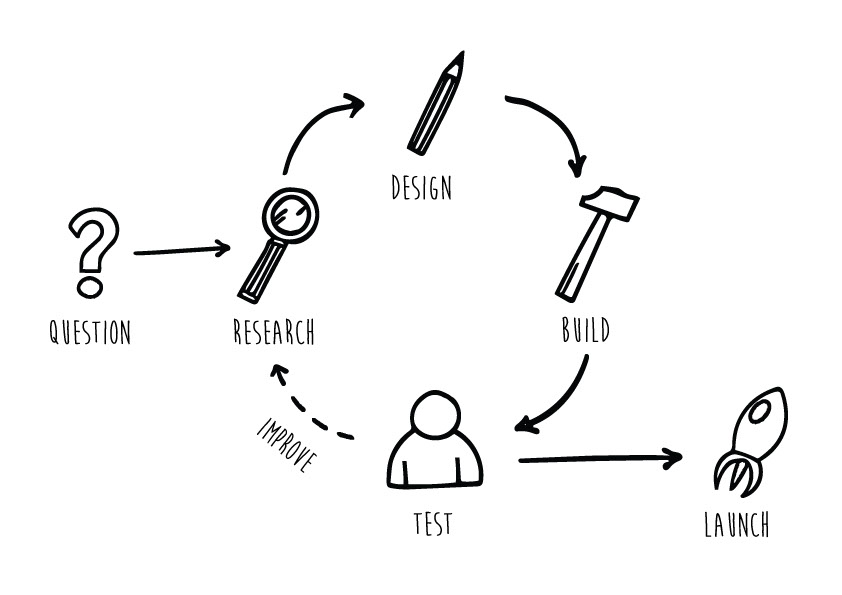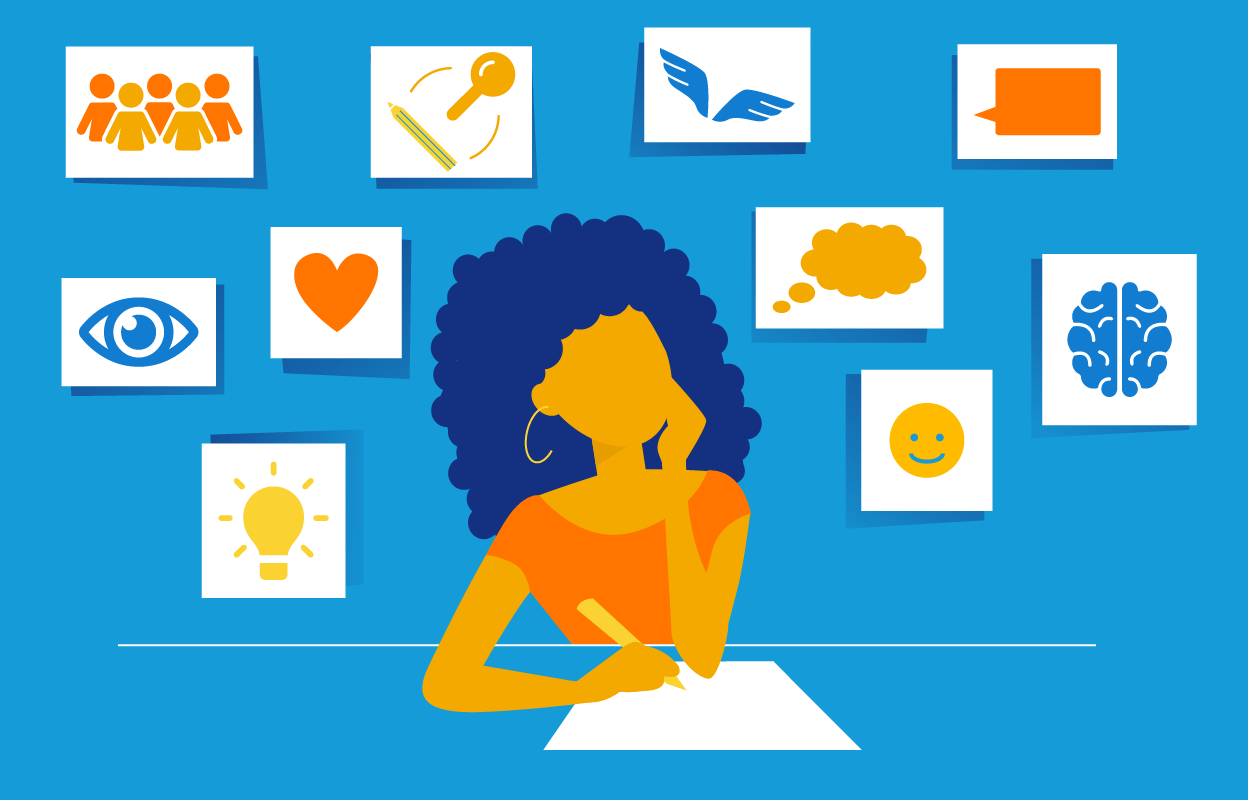Learning experience design process
Designing a learning experience can be an unpredictable and adventurous process. This is in a way inherent to the creative, agile and innovative approach LX designers use. Then what does a typical LX design process look like? These are the six most common steps:

To give you an idea of what disciplines form the foundation of LX design take a look at this graphic:

1. Question
You start with a question you need answered or a problem you want to solve. For example: “How can we teach teens, who struggle with obesity, to live a healthier lifestyle?” or “How can entrepreneurs learn to use their time more effectively?”. Often the question isn’t completely clear at first. There can be underlying questions or related questions that are more relevant or important. Formulating the most relevant question will give you a head start.
2. Research
There are at least two things you need to research before you can design a learning experience:
The learner
Researching the people who will actually learn from the experience that you’re designing is a vital part of the design process. There are multiple ways to connect with the learner. The easiest and most effective way is by simply getting in touch with them through conversation or by doing an observation or interview.
- We've also created the Empathy Map for Learners to help you in this process.
The learning outcome
The learning outcome describes how the learning experience will impact the learners life in a positive way. It talks about what the learner gains from this experience and how this is relevant a valuable to the learner. Once you know the desired learning outcome, you can figure out the different learning objectives.
- The Learning Experience Canvas can also help you in this process.
3. Design
Time to get creative with the design of your learning experience.
Ideas
Generating good ideas is the fuel for your creative process. The easiest way to come up with ideas is through brainstorming. Think about the people you invite to take part in the brainstorm. Having people with different perspectives can be really helpful.
Concept
Taking a good idea and turning it into a concept design is the next step. How you do this depends on the type of experience you are working on. For example, a web based experience will probably ask for a functional design while a game based experience requires a game design.
4. Develop
In the development phase you take your concept design and turn it into a prototype. There’s a range of possible levels of complexity and scale when it comes to developing a prototype. The simplest, quickest and easiest form is a paper prototype. On the other end of the spectrum is a fully functional high tech prototype. The kind of prototype you develop depends on the type of experience that you’re designing. Patrick van der Borgt gave an insight in his creative prototyping process during LXDCON'20 and expanded on it on our blog in the article "Dirty hands do all the thinking in LXD".
5. Test
Does your prototype actually work? Let’s put your prototype to the test to figure out what learning objectives are reached by the learner and if the actual learning outcome is achieved. Also, does your design appeal to the learner? There are different ways to test your prototype. You definitely want to prepare the test so you know what you’re testing when the learners participate in the experience. Having a list of tasks and questions for the learner can really help to get the most out of your test session.
6. Launch
It’s not very often that your first design is perfect. The results you get from your test will almost certainly lead to revisiting some or all of the previous steps. Maybe you need to do a bit more research, change your design or upgrade your prototype. It’s also possible that you have to ask a different question which could lead to a completely new design cycle. Basically you need to repeat this cycle until you (and the learner) are satisfied with the results.
- If you want to learn how to apply the LX design process for your project, join us for the 4 week online LXD course starting April 1, 2024!
Up Next

Qualities of a LX designer
Designing learning experiences requires a certain set of qualities that enable the learning experience designer to come up with the best possible learning experiences. Here's a list of these qualities.
